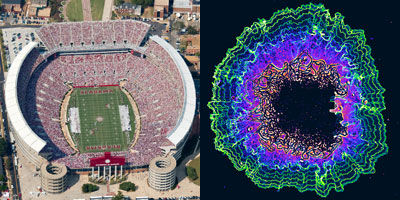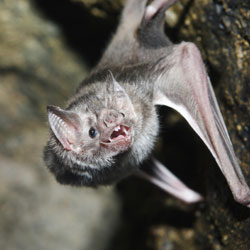If you participated in a cupcake taste test, do you think you’d be able to distinguish a treat made with natural sugar from one made with artificial sweetener? Scientists have known for decades that animals can tell the difference, but what’s been less clear is how.
For fruit flies, nutritive sugars activate a set of neurons in the brain (red) with nerve fibers (white) that extend to the gut. Credit: Jason Lai and Greg Suh, New York University School of Medicine.
Now, researchers at the New York University School of Medicine have identified a collection of specialized nerve cells in fruit flies that acts as a nutrient-detecting sensor, helping them select natural sugar over artificial sweetener to get the energy they need to survive.
“How specific sensory stimuli trigger specific behaviors is a big research question,” says NIGMS’ Mike Sesma. “Food preferences involve more than taste and hunger, and this study, which was done in an organism with many of the same cellular components as humans, gives us a glimpse of the complex interplay among the many factors.”
The study, described in the July 15 issue of Neuron, builds on the researchers’ earlier studies of feeding behavior that showed hungry fruit flies, even ones lacking the ability to taste, selected calorie-packed sugars over zero-calorie alternatives. The scientists, led by Greg Suh and Monica Dus  , suspected that the flies had a molecular system for choosing energy-replenishing foods, especially during periods of starvation. Continue reading “Food for Thought: Nutrient-Detecting Brain Sensor in Flies”
, suspected that the flies had a molecular system for choosing energy-replenishing foods, especially during periods of starvation. Continue reading “Food for Thought: Nutrient-Detecting Brain Sensor in Flies”







